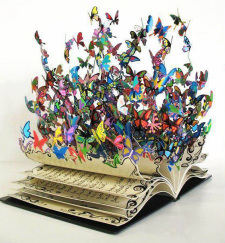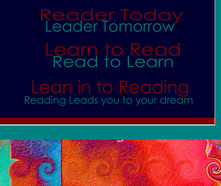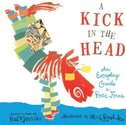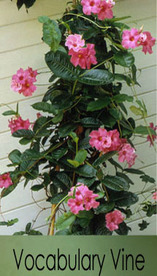Reading and Comprehension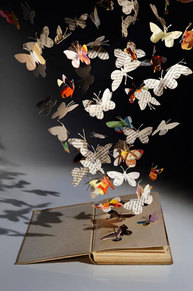
You are here for reading intervention. It is my intention to give you instruction to help you become a stronger reader.
In the beginning you may be nervous or frightened, but after you get some training you will become more comfortable and you'll read more fluently and confidently. Your eyes will sparkle and your face will brighten because you will recognize that reading is amazingly wonderful and beautiful. You will learn that reading begins with decoding the structure of letters and the sounds they make. It won't take you long to see patterns in words and meaning in sentences, paragraphs and stories. Here you will learn how to de.con.struct and reconstruct big words, short words. and ri.di.cu.lous.ly long words. As you figure out the code there is no doubt that your comprehension will astound you as words surround you with their power and beauty. Throughout this special reading adventure, words you thought you never knew will become as soft as cookie dough as you attack them and chew them into bits and pieces. Yes! your words will morph into little edible syllables (syl. la. bles). You just have to believe that you are tough enough to work harder, and aim higher. It is crucial that you know that you can achieve whatever you believe. Words are not strangers they are now your favorite new friends. They help you stretch your imagination and will aid you in writing strong compositions. When your hard work here is done, you will be in a better position to attend an institution of higher education. Teacher Tips: Click Here for Word Attack strategies |
|
|
Remember to approach your article or story as though you are unwrapping a gift.
|
U N W R A P' DUnwrap is one of our favorite reading and comprehension test taking strategies. . Every time you read, you activate and add to your schema.
You are learning something new. U - Underline title, pictures, captions - make note of genre, make a prediction N - Number your paragraphs, W - Walk through the questions before reading R - Read story at least 2 times or until you understand A - Annotate as you read - stop and make a jot note after each paragraph P - Prove your answers - Note the paragraph # where you found answer e.g. P.2 D - Do consult your Dictionary for unfamiliar words |
Reading with comprehension means actively deconstructing and unpacking the story bit by bit to reveal the wonderful gift of knowledge.
|
|
Monitor Comprehension
Activate and Connect Ask Questions Inferencing Determine Importance Summarize and Synthesize |
Monitor ComprehensionListen to your inner conversation as you read
Notice when you lose your way Concentrate and slow down your reading Make jot notes as you read |
Activate and ConnectPay attention to text features such as titles, subheadings, graphics, charts, illustrations
Make a connection with your background knowledge about the topic |
Ask QuestionsRead with your questions in mind.
Try to find answers to your questions as you read the text. Look forward to adding new knowledge to your existing schema |
InferencingUse context clues to figure out unfamiliar words.
Use clues from the text to figure out the meaning of poetry. When the author does not give explicit answers in a reading selection the reader must search for clues. Use text + schema to figure out answers. |
Determine ImportanceRead the title and first paragraph carefully. Determine what the author's perspective and purpose is. Figure out what is important information in each paragraph. Make jot notes or highlight important info.
|
Summarize and SynthesizeRead, Write, Think and Reflect. Reread text and try to paraphrase (put in your own words) what the text is saying. Try to capture the GIST of what the author is saying and write a short summary. The summary should capture what the whole story is all about.
|
Multiple Choice Test Taking Tips
Root Words and AffixesRoot Word or Base Word - This is a basic word to which affixes (prefixes and suffixes) are added. It is called a root word because it forms the basis of a new word. The root word is also a word in its own right. For example, the word careless consists of the word care and the suffix -less
|
See below for examples of Root Words and Affixes
|
|
|
The most common prefix is un-, which means not or opposite of. If you add un- to the word happy, the new word becomes unhappy, which means not happy
|
The most common suffixes are -s and -es, which mean more than one (or the plural) of the word.
|
Genre StudyThe term 'genre' is a french word meaning ' type or kind of literary category
|
Examples of Literary Genres
Fiction Non Fiction Drama Poetry |
Genre Power Point and Quiz |
PIEAuthor's Purpose Persuade Inform Entertain |
Author's Purpose and Position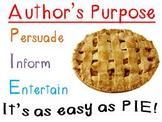
Good readers try to Determine the author's purpose for writing a text. Stories, plays, movies have the purpose of entertaining the reader. Non fiction texts such as biographies, brochures, manuals are written to inform the reader. A speech, advertisement or editorial are examples of Persuasive texts Click below for powerpoint and Author's purpose quiz Powerpoint Author's Purpose Quiz |
Rhetorical Fallacies and Media LiteracyRhetoric - art of using language persuasively Fallacy - an argument based on bad logic Non sequitir - a conclusion that does not really follow from a fact or idea Caricature - exaggerates the traits of a person or idea Most caricatures have a bit of truth to make the argument sound more convincing Emotional fallacies - evoke negative feelings Leading Question - A leading question tries to lead a person to give a specific answer. |
Persuasive TextsPersuasive texts are written to convince the reader of something.
The author's position is how an author views a subject (their opinion) A skillful reader will try to find out what an author's perspective is. An author may use cause and effect to get the reader to agree. Sometimes readers have to be careful about accepting the author's perspective. Author's may use supporting arguments that contain contradiction (making two statements that cant be true) or exaggeration (making things seem bigger than they really are). |
|
Poetic Forms and DefinitionsThere are many different forms of poetry.
|
Literary Elements
|
She's Somewhere
|
The Mermaid
|
Sonnet XVIII
|
A Song in Spring
|
Point of View in Literary WorksPoint of View or perspective of the narrator - the reader determines the relationship between the person telling the story (the narrator) and the agents referred to by the story teller (the characters). Click here for definitions of point of view terminology |
Point of View Vocabulary Termsfirst-person
second-person third-person third-person objective third-person limited third-person omniscient Click below for powerpoint and review Point of View power point Point of View Quiz |
Story StructureNarrative structure consists of the traditional parts of a story and the order in which the reader encounters them; these provide a framework for the unfolding of the story. Often represented visually as a triangle, these parts consist of exposition or beginning, rising action, climax, falling action, and resolution or denouement.
Click below for powerpoints Story Structure Lesson Story Sample Graphic Organizer of Story Pyramid |
Story Structure VocabularyExposition Inciting Incident Rising Action Climax Falling Action Moment of Final Suspense Resolution or Denouement Click here for Powerpoint |
More Story Structure
|
Dramatic Elements Vocabulary
Stage directions
Script
Playwright
Props
Soliloquy
Dramatic irony
The word Drama comes from Greek verb dran
which means 'to act' or 'to do
IronyIrony Vocabulary Terms to know
Verbal irony Situational irony Dramatic irony Click below for powerpoint on the Types of Irony Irony Powerpoint |
.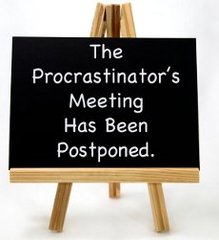
|
What is Irony?A simple definition for irony:
Irony usually signals a difference between the appearance of things and reality.
|
SummarizationSummarization is often a difficult task for some students. However it may not be so daunting if you approach it as a fun activity.
Challenge yourself to capture the most important points in as few as 3 or 4 sentences. Pretend you need the most crucial key points from the article to unlock a box of Golden Treasure For the main idea you can challenge yourself to capture the most important points in as few as 6 words. Before you try writing another summary, try writing a 6 word memoir for your own life ( Just making a random list of words does not count!) |
Paragraph SUMMARIZATION FRAMES If the main idea of the paragraph is description/definition, use the frame: ‘’A _____ is a kind of _____ that _____." If the main idea of the paragraph is problem/solution, use the frame " _____ wanted _____ but ______ so _____ ." If the main idea of the paragraph is compare/contrast, use the frame "X and Y are similar in that they both _____, but X _____, while Y _____ .", If the main idea of the paragraph is sequence use the frame "_____ begins with _____ , continues with _____ and ends with _____ ." If the main idea of the paragraph is cause/effect, use the frame " _____ happens because _____ ." |
|
Vocabulary practice is essential to becoming an excellent reader and writer. Here are some additional resources for extending your vocabulary. |
